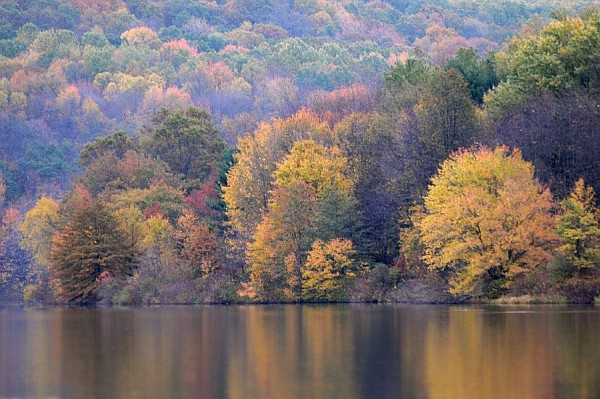
This long Columbus Day weekend is a good time to get outdoors and enjoy the fall colors, especially in the forests north and east of Pittsburgh.
Steve Gosser photographed this beautiful scene in October 2011.
(photo by Steve Gosser)

This long Columbus Day weekend is a good time to get outdoors and enjoy the fall colors, especially in the forests north and east of Pittsburgh.
Steve Gosser photographed this beautiful scene in October 2011.
(photo by Steve Gosser)
Are you hooked on penguins? Would you like to see more of them from the comfort of your home?
Check out the new online citizen science project, Penguin Watch, where you can view more than 175,000 photos of Antarctic penguins, chicks and eggs.
Because penguins are declining, scientists are monitoring them using remote cameras. The cameras have taken a lot of pictures — so many that the task of counting the penguins and their breeding success is impossible for the few scientists involved. That’s where citizen science comes in.
Zooniverse put the photos online and made an easy tool for counting the penguins. Look at the photo. Click on every penguin. Done! The clicks become a crowd-sourced map of Antarctica’s penguins.
It doesn’t matter if you make mistakes because crowd-sourcing smooths out the errors. You can even chat about the images with other volunteers and the researchers at Penguin Watch Talk.
Help scientists understand why penguin populations are declining and how to protect them by visiting www.penguinwatch.org or these links on Facebook and Twitter.
Look at the photos. Click on every penguin. That’s all you have to do.
(remote camera photo of penguins in Antarctica from Zooniverse Penguin Watch. How many do you see?)
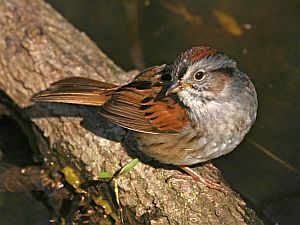
Throw Back Thursday (TBT):
October is sparrow time in Pennsylvania. Migrating warblers have left. Migrating sparrows have arrived.
Though swamp sparrows aren’t singing right now, the species is famous for their regional dialects. Over the winter they’ll be exposed to other sparrows with other dialects. Will they change their accents to match their winter friends or retain their dialects to use next spring?
How do swamp sparrows remember their songs? The answer is in this 2008 blog post: It’s Done With Mirrors
(photo of a swamp sparrow by Chuck Tague)
Have you ever seen this bird?
It resembles a purple gallinule (Porphyrio martinicus) but it’s the size of a chicken with darker plumage and scary-looking feet. It looks like a gallinule on steroids.
This is, in fact, a purple swamphen (Porphyrio porphyrio), native to Africa, tropical Asia, Indonesia, Australia and New Zealand, but you don’t have to travel that far to see one.
I learned in an ABA article by Bill Pranty that purple swamphens mysteriously appeared at the Silverlakes development in Pembroke Pines, Florida in 1996. Some speculated that the birds had escaped from Miami MetroZoo during Hurricane Andrew four years earlier, but the zoo hadn’t lost any swamphens. Closer inspection revealed that two breeders a quarter mile from Silverlakes had allowed their purple swamphens to roam free. Naturally some of the swamphens didn’t come home.
By October 2006 purple swamphens were so prolific that Florida’s wildlife managers decided to eradicate them, but more than two years of shooting had no effect. The swamphens continued to expand their range. The failed eradication program ended in December 2008.
The first time I ever saw a purple swamphen was last December at Green Cay Wetlands in Boynton Beach, Florida, about 40 air-miles from their original release point. I’ve birded in Palm Beach County numerous times since the swamphen’s release — especially at Wakodahatchee Wetlands where they appeared in 2000 — but it took 20 years for me to see one.
Though the bird was added to the official ABA Checklist in February 2013, their reputation is tarnished. When I pointed out my new Life Bird to another birder standing nearby she said, “They aren’t a good thing to see.”
Read about the purple swamphen’s history, the unsuccessful attempt to eradicate them, and their expansion in Florida in this article by Bill Pranty.
(photo from Australia via from Wikimedia Commons. Click on the image to see the original)
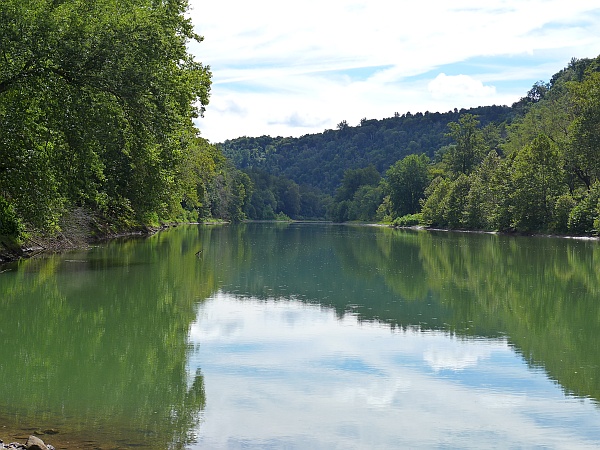
Amazing as it seems none of the hills in the Pittsburgh Low Plateau were ever mountains. They were all made by water cutting rock.
When dinosaurs roamed the earth, Pittsburgh was at the shore of a shallow inland sea to our west. At the time our soil was composed of sandy beaches, mudflats and swamps. The sand became sandstone, the mud became shale, and the decayed swamp plants became coal.
No geologic events deformed our rocks. To our east the Appalachians slammed into the edge of the plateau and pushed up the Allegheny Mountains. To our north the retreat of the glaciers made the land rise in a bounce-back from the pressure release. Our plateau remained essentially flat, tilting slightly to the south and west. Indeed the rock layers in our area are horizontal. You can see this at highway road cuts.
But Pittsburgh doesn’t look flat.
Water transformed us, cutting dendritic paths in the landscape as it drained to the inland sea (now the Gulf of Mexico). The paths became deep valleys. When you stand in a valley you see hills.
Vegetation now hides what happened to the land. You see the hills but none of the water cuts as shown in this view of the Kiskiminetas (Kiski) River at the mouth of Roaring Run.
Take a short hike up Roaring Run and see what water can do.
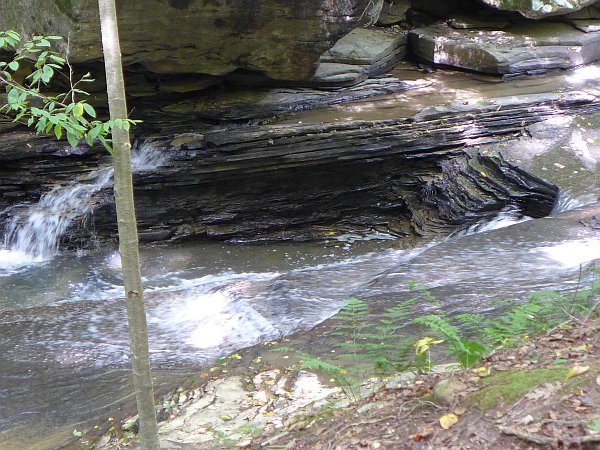
Here the creek is carving a notch in weak shale. The valley walls are steep and narrow. The notch is big enough to wade in.
Eventually Roaring Run may look like the Kiski with tree-covered hills.
It all comes from water cutting rock.
(photos by Kate St. John)
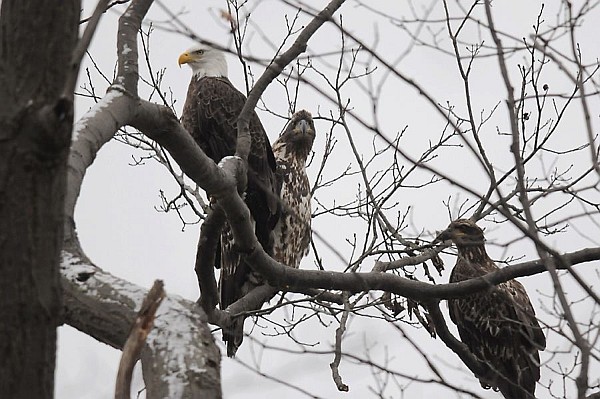
In the winter, bald eagles are more social than your typical bird of prey. Most raptors are paired or alone in the non-breeding season but bald eagles congregate in large numbers where food is plentiful. Visit Conowingo Dam in November and you’ll find hundreds of eagles every day.
Eagles have to sleep somewhere so when night falls they roost together. Sometimes a few choose a temporary location. Often a large group roosts in the same place every year.
Roosts are so important to bald eagles’ lives that they’re protected by the Bald and Golden Eagle Protection Act which prohibits disturbing eagles in any way that “substantially interferes with their normal breeding, feeding, or sheltering behavior.” On paper this protects their roost trees from being cut down even when the eagles aren’t there.
But the Act can’t protect a place no one knows about. Where are the roosts?
To answer this question the Center for Conservation Biology (CCB) has been mapping bald eagle roosts in North America using their own and others’ eagle tracking data. (CCB and others have fitted eagles with satellite backpacks.) So far they’ve located more than 1,000 roosts. Now it’s our turn to help.
Last month CCB launched an online Eagle Roost Registry. Click here to see a map of the 1,000 roosts.
Do you know of a roost that’s not on the map? Contact Libby Mojica at the Center for Conservation Biology (ekmojica@wm.edu, 757- 221-1680) or visit the online registry to sign up.
Click here for more information at the Center for Conservation Biology.
(photo of bald eagles at Crooked Creek by Steve Gosser)
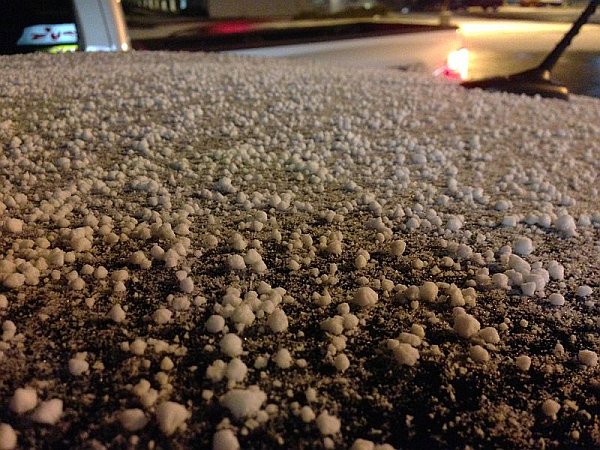
5 October 2014
Yesterday afternoon I was caught in a graupel storm.
I was standing on Bellefield Avenue looking at the Cathedral of Learning through binoculars when the clouds darkened, the wind increased and it started to rain. I was trying to find the peregrines.
The rain turn white and then, between the Cathedral of Learning and Heinz Chapel, it didn’t come down. It floated up. What was this?
A woman ran past me talking on her cellphone, “I’ve got to hang up. It’s hailing out here.”
Why was it hailing in 46 degree weather without a thunderstorm?
When I got home I looked up the NOAA weather forecast discussion which said, “Shortwaves combined with cold air aloft will bring scattered showers to the region today. Some isolated graupel is also possible.”
Graupel is a German word for “precipitation that forms when supercooled droplets of water collect and freeze on a falling snowflake, forming a 2–5 mm ball of rime.”(*)
The balls look like hail but they’re fluffier. No wonder they were floating on the updraft at the Cathedral of Learning.
It wasn’t hailing. It was graupeling.
(photo of graupel in Elko, Nevada via Wikimedia Commons. Click on the image to see the original.)
(*) definition from Google. By the way, “graupel” fails all my spell-checkers so I’m guessing that “graupeling” is spelled with one L as is normal when adding ‘-ing’ to ‘el’ in American English.
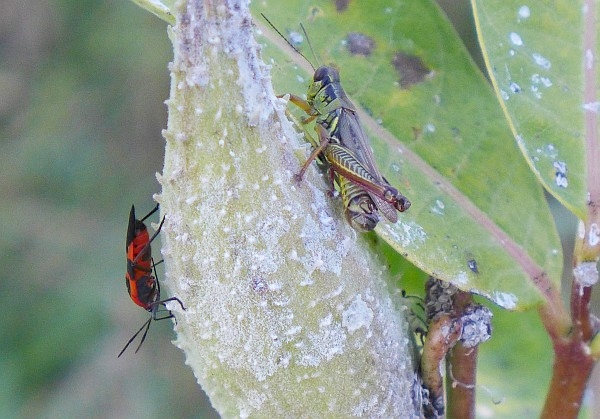
Thursday evening at Fern Hollow Nature Center I found two insects perched on a milkweed pod.
The grasshopper is doing his best to blend in.
The milkweed bug doesn’t need to. He eats milkweed so he’s poisonous.
He wears ‘danger colors’ like the monarch butterfly: black and orange.
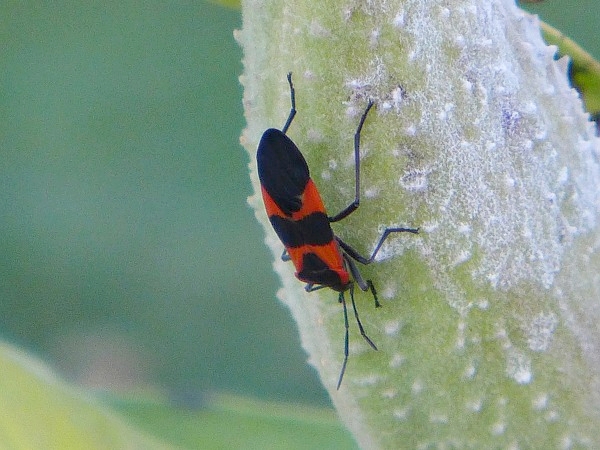
(photo by Kate St. John)
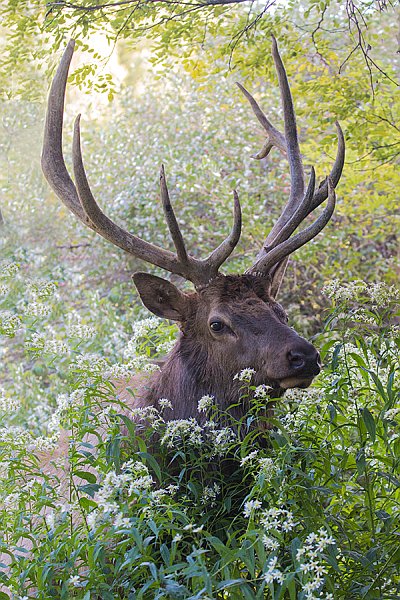
3 October 2014
This animal is in a rut. Which one?
Rut (noun 1):
1. a long deep track made by the repeated passage of the wheels of vehicles.
2. a habit or pattern of behavior that has become dull and unproductive but is hard to change.
Rut (noun 2): An annual period of sexual activity in deer and some other mammals, during which the males fight each other for access to the females.
In September and October Pennsylvania’s elk herd has an annual period of sexual activity. The males pursue the ladies, spar with other males, and “sing” their bugling love song.
Visit the Elk Country Visitor’s Center in Benezette to see and hear what this is like. For a preview, watch this handheld video of the herd in October 2010. The elk are so preoccupied that they ignore the people.
So yes, in October this elk is in a rut.
If things don’t go well, he may feel he’s in “a habit or pattern of behavior that’s become dull and unproductive but is hard to change.”
(Thanks to Paul Stanszewski for the photo.)
(*) Definitions of rut from Google. Rut(1) comes from the same word as “route.” Rut(2) comes from the same word as “roar.”
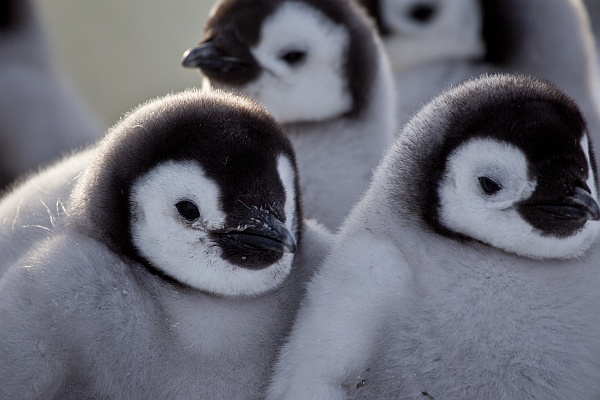
Last night(*) in the second episode of Penguins: Spy in the Huddle we saw how vulnerable young penguin chicks can be. Fortunately, the dangerous period doesn’t last long. In this final episode they’ll grow up and become independent. Whew!
Independence is forced on penguin chicks because they’re so hungry. Both parents have to fish to keep up with their kids’ demands so the chicks are left largely alone. Young emperors naturally huddle in a crèche but rockhopper teenagers have to be poked to join the group by the few non-breeding adults who watch nearby.
The crèches are safe places to learn from each other but everyone’s equally clueless. How do we walk on ice? What is this wet stuff (melted ice)? My gosh, my down is falling out and I’m getting feathers!
The chicks learn to fight their attackers. Their parents bring food. Life is good. And then…
Their parents don’t come back. Amazingly this triggers a desire to walk to the ocean, a place they’ve never seen. Everything is new but they figure it out and even get help from some unexpected allies.
By now we’re all convinced that penguins chicks are clumsy … until they jump in the ocean. Oh my! They fly underwater! Faster and faster, the rockhoppers make beautiful bubble trails as they disappear in the distance. Such joy!
Watch the final episode of Penguins: Spy in the Huddle, “Growing Up,” on PBS next Wednesday, October 8 at 8:00pm EDT. In Pittsburgh it’s on WQED.
(*) If you missed Episode 2 last night because of the Pirates’ wildcard game, WQED will rebroadcast it on Friday Oct 3 (tomorrow) at 4:00am. Perfect for a DVR.
(photo courtesy of Frederique Olivier/©JDP via PBS NATURE)